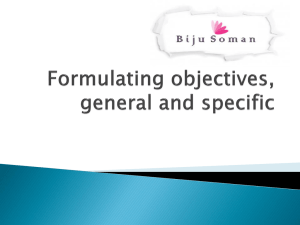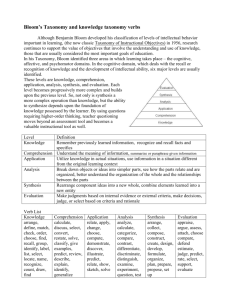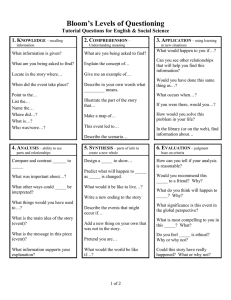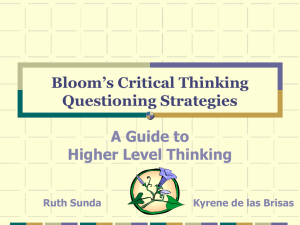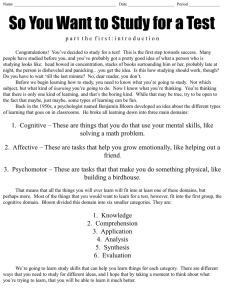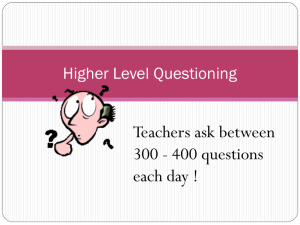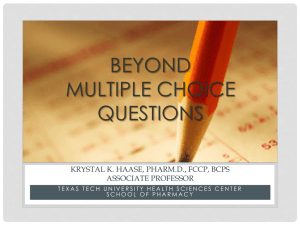Critical Thinking and Argumentation
advertisement
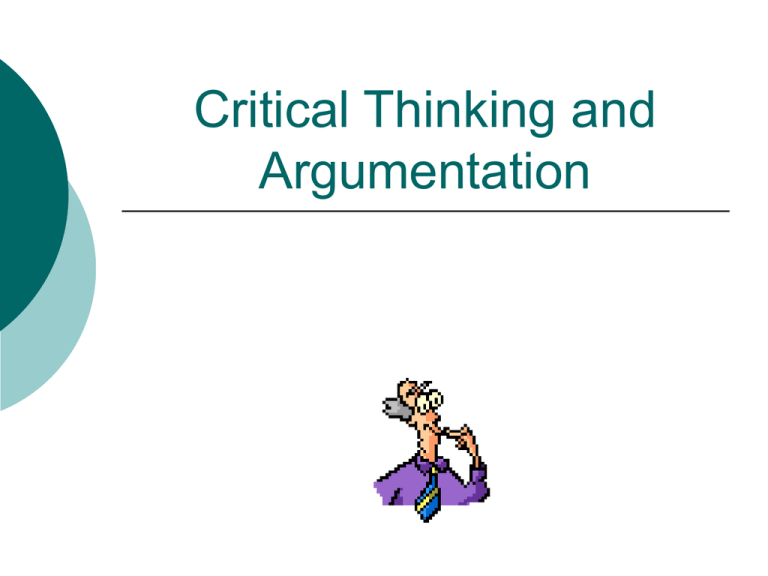
Critical Thinking and Argumentation What is critical thinking? “Critical thinking is the formation of logical inferences.”(Simon&Kaplan) Critical thinking is “reasonably and reflectively deciding what to believe or do.” (Ennis) Critical thinking is “the examination and testing of suggested solutions to see whether they will work.” (Lindsey, Hall, and Thompson) Bloom’s Taxonomy In 1956, Benjamin Bloom headed a group of educational psychologists who in turn developed a classification of levels of intellectual behavior important in learning. Bloom found that over 95% of the test questions that students encounter require them to think at the lowest level . . . the recall of information. More: Bloom identified six levels within the cognitive domain. From simple recall to more complex abstract levels. Knowledge, comprehension, and application are consider lower levels. Analysis, synthesis and evaluation are considered higher levels. Bloom’s model: Evaluation Synthesis Analysis Application Comprehension Knowledge Knowledge: Knowledge is defined as the remembering of previously learned facts to theories. Language related to knowledge is: arrange, define, duplicate, label, list, memorize, name, order, recognize, relate, recall, repeat, reproduce state. Comprehension: Comprehension refers to the ability to grasp the meaning of material. Language used to identify comprehension would be classify, describe, discuss, explain, express, identify, indicate, recognize, report, restate, review, select, and translate. Application: Application refers to the ability to use learned material in new and concrete situations. Applications of things such as rules, methods, concepts, principles, laws, and theories. Language used: apply, demonstrate, dramatize, employ, illustrate, interpret, operate, practice, schedule, sketch, solve, use, and write. Analysis: Analysis refers to the ability to breakdown material into its component parts so that its organizational structure may be understood. Examples include recognizing unstated assumptions, recognizes logical fallacies, distinguish between facts and inferences, evaluate the relevancy of data, analyze the organizational structure of a work (art, music, writing, speech) More: Language used in analysis includes analyze, appraise, calculate, categorize, compare, contrast, criticize, differentiate, discriminate, distinguish, examine, experiment, question and test. Synthesis: Synthesis refers to the ability to put parts together to form a new whole. Examples include putting together a speech, a research proposal, integrate learning from different areas into a plan for solving a problem, etc . . . Language includes arrange, assemble, collect, compose, construct, create, design, develop, formulate, manage, organize, plan, prepare, propose, set up and write. Evaluation: Evaluation is concerned with the ability to judge the value of material (speech or paper) for a given purpose. Evaluation is the highest level because it contains “all” the other categories, plus conscious value judgments based on clearly defined criteria. More: Examples include judge the logical consistency of written material, judge the adequacy with which conclusions are supported by data, judge the value of a speech, etc. Language includes appraise, argue, assess, attach, choose, compare, judge, predict, rate, select, support, value, and evaluate. The six hats of thinking: Edward de Bono’s six thinking hats is a technique used for problem solving and gaining new perspectives. In wearing a particular thinking hat people play roles. The six hats won’t produce better solutions alone—you still need the right skills and experience. Six hats: White-is neutral and objective, concerned with objective facts and figures. Red-relates to anger and rage, is concerned with emotions. Black-is gloomy, and covers the negative-why things can’t be done. Yellow-is sunny and positive, indicating hope and positive thinking. Green-is abundant, fertile growth, indicating creativity and new ideas. Blue-is the sky above us, so is concerned with the control and organization of the thinking process. Attributes of a critical thinker: Asks pertinent questions. Assesses statements and arguments. Is able to admit a lack of understanding or information. Has a sense of curiosity. Is interested in finding new solutions. Is able to clearly define a set of criteria for analyzing ideas. Is willing to examine beliefs, assumptions, and opinions and weigh them against the facts. More: Listens carefully to others and is able to give feedback. See that critical thinking is a lifelong process of self-assessment. Suspends judgment until all facts have been gathered and considered. Looks for evidence to support assumption and beliefs. Looks for proof. Is able to adjust opinions when new facts are found. Examines problems closely. Is able to reject information that is incorrect. Conclusion: Critical thinking is important to argumentation and debate because it originates from the principles of problem solving, decision making and reasoning. Think about it!



